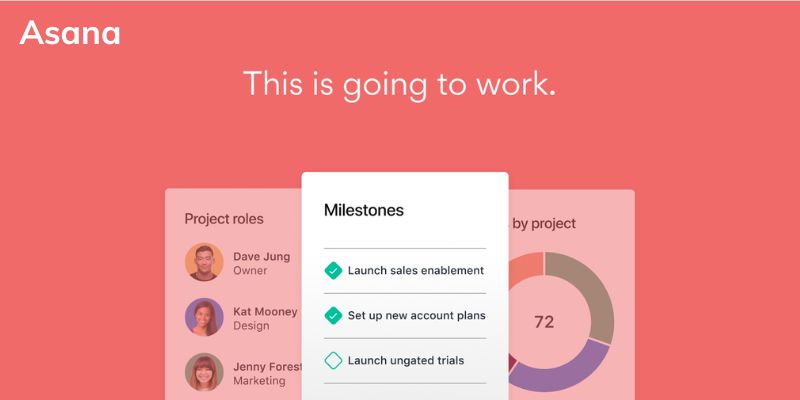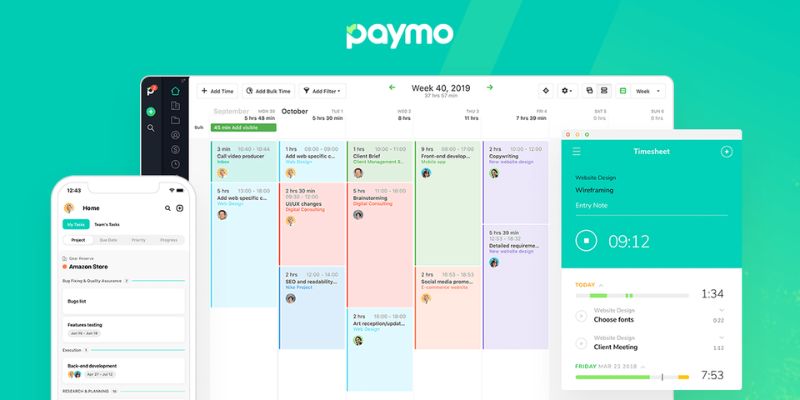Since there are fewer participants and fewer processes to learn, project management software for small businesses may appear straightforward. However, large companies may employ separate project managers for sales, marketing, and product development. The small business project manager, on the other hand, is in charge of several divisions and juggles more hats than a person could possibly wear. Explore further on tophotedu.com
Contents
Why does small business project management software work so well?

Collaborating with clients or teams. Project success doesn’t occur in a vortex. Every app on the list provides some form of in-app collaboration, such as integrated chat or file sharing or a secure integration with a service like Slack. Possibilities for integration. Since your company’s project management workflows are its core, all of the apps in your software stack must be integrated.
Adaptable viewpoints. Although there are several effective solutions geared toward the Agile and Scrum approaches, it is not include them on our list because your project management app should be used by all teams inside your organization. This entails customisable perspectives and assistance with various project management techniques. Simply project management apps.
It only took into consideration apps that were primarily geared toward project management for this piece even though there are many software solutions that offer project or task management as a minor subset of functionality.
Team permissions and roles that are robust. Setting flexible project permissions becomes more crucial the more participants you include in the project. Others may require full administrative privileges, while others may merely require ability to see.
4 Best Tools Free : Project Management Software For Small Businesses
1. Project Management Software For Small Businesses: Asana

Its user interface is simple to use and well-designed, with a clear hierarchy of elements. The navigation sidebar is located on the far left and gives you access to your own task list, messaging inbox, metrics, and numerous projects. The list of tasks, their due dates, and the people to whom each job is assigned are all visible in the main section. In the event of overlap, a task may be allocated to more than one project and may include an infinite number of subtasks.
There is no correct or incorrect method to construct your project, project components, or tasks, which is where Asana excels the best. The list format, which is the default view, is straightforward and makes it simple to search for assignees and due dates. A board, timeline, calendar, or dashboard layout are other options.
Asana gives you the option to build task and project templates, but by default, everything is left up to you; all tasks must have a title. Assignees, due dates, organizational tags, custom fields, and other features are then all up to you. Despite all the choices for adding data to your assignments, Asana’s user interface is still very straightforward. This aids in keeping attention on the work itself rather than the project management software.
2. Project Management Software For Small Businesses: Trello
Kanban boards are used by the simple-to-use visual project management platform Trello. Additionally, Trello doesn’t have the same learning curve as most project management software because of its simple, drag-and-drop user interface, which will enable your team to get started right away.
Create a new board at first by starting from scratch or select a template from hundreds of choices in marketing, sales, design, team management, and other areas. Every Kanban board has the ability to be set up to look exactly like the backlog, in-progress, and completed lists seen in the traditional Agile model. Alternatively, you might be creative and use the boards as collaboration or ideation tools, where team ideas are gathered, then filtered and approved as necessary. Cards (i.e., tasks) can have custom fields, labels, attachments, comments, checklists, and more.
3. Project Management Software For Small Businesses: Paymo

You can choose whether a project is billable based on hourly rates, a flat price, or not at all thanks to its billing-centric architecture, which allows projects to be set up per client. Paymo will generate the invoice automatically based on the time spent on each job and project as a timer is integrated into the user interface.
Each project contains all of the related activities and subtasks, and there are five different ways to see the work: list, table, Kanban board, Gantt chart, or calendar. All of your tasks for each client and project may be sorted using Paymo’s filter according to a variety of criteria, including status, due dates, and priorities. You may monitor timesheets, connect with coworkers, and preserve all project-related data within each project.
4. Project Management Software For Small Businesses: Wrike
No matter how capable your project management tool is, you’ll still need to manage a portion of your tasks via email. With a built-in email integration, Wrike makes it incredibly easy for you to link the activity in your inbox to Wrike. You can use email to create new Wrike tasks, assign tasks, add attachments, schedule tasks, alter task statuses, assign tasks a priority, add comments, or add tasks to one or more subfolders.
You’ll eventually log into Wrike and manage projects from there, even though you might perform a lot of chores without ever leaving your inbox. For example, a task’s numerical priority level, currency, or percentage can be added as one of several custom fields. Your Table view resembles a supercharged spreadsheet once each job has been configured. Due dates may be the most significant factor for marketing, while priority levels and progress percentages may be more crucial for development projects, making the associated columns more prominent than others. Your team members will always be aware of the knowledge needed for any task they are given, regardless of the situation.
The free versions of each app on this list allow you to try them out before purchasing. You should choose and attempt the option that best fits your personality, in my opinion. Proceed to the following tool if it isn’t effective for you. Keep in mind that the greatest approach is the one that provides you with the framework and psychological support you need to complete your projects quickly and with high-quality results.

